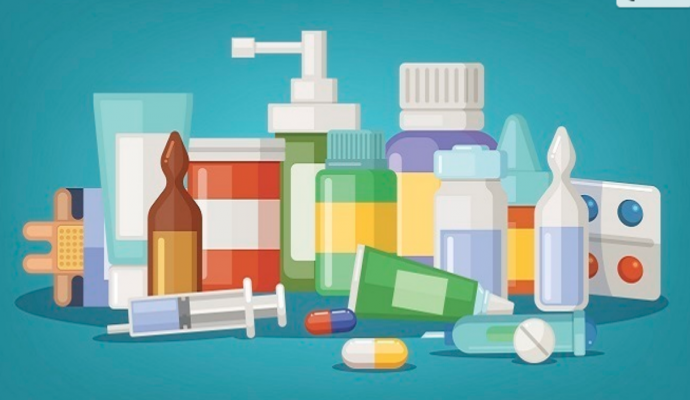66% of Adults Report Prescription Drug Price Increases Since 2017
Most US adults said prescription drug prices have risen either “a little” or “a lot” in the last three years, prompting many to question the administration’s progress with lowering costs.

Source: Thinkstock
- Two-thirds of US adults reported that prescription drug prices have increased either “a little” or “a lot” since 2017, the first year of the Trump administration, according to a recent study.
The study posted by Gallup and conducted in partnership with West Health focused on lowering the rising healthcare costs for seniors. Researchers also explored in a separate survey the spread of the COVID-19 pandemic and whether people are avoiding care due to costs or fear of infection.
The survey data is based on interviews with 1,020 US adults across all 50 states and the District of Columbia conducted between February 17 to 28, 2020.
When asked if they believed the cost of prescription drugs have increased, a total of 66 percent of US adults reported that they saw overall price increases. Only six percent and one percent of individuals said that prices decreased a little and decreased a lot, respectively.
Additionally, 25 percent of US adults thought that prices stayed relatively the same.
READ MORE: FDA Orders Removal of Prescription, OTC Ranitidine Drugs
The belief that prescription drug prices have increased was highly consistent across demographic subgroups, with little differences found among race/ethnicity, gender, educational level, annual household income, and age, researchers reported.
Rising prescription drug prices, however, may have influenced survey respondents’ perceptions of the current administration.
When asked how much progress the Trump administration had made to limit the rising costs of prescription drugs in the US, 36 percent of individuals interviewed between the study dates said the administration hadn’t done very much at all, while a mere seven percent said they have done a great deal to control the prices.
“These results are slightly more positive for the president than in September 2019, when 27% perceived a great deal or fair amount of progress. The four-percentage-point increase is statistically significant,” researchers said.
In September, over half of Republicans (56 percent) perceived a great deal or fair amount of progress and 38 percent reported not very much or none at all. Among Democrats, the percentages stood at 8 percent and 90 percent, respectively.
READ MORE: Key Prescription Drugs Being Used to Treat COVID-19 Patients
Lowering prescription drug prices will be a major part of the upcoming election, the survey found.
About one-third of US adults seriously considered a candidate's position on lowering drug costs to be the single most important issue or at least among the most important issues in influencing their vote in the 2020 election, the study found.
Annual household income is greatly related to importance to voting, with 45 percent of those from households making less than $40,000 rating the drug price issue as vitally important, compared with 14 percent of individuals from households making $100,000 or more.
The study uncovered that one’s chosen political party may have an influence on how individuals responded to price questions as well.
“Perspectives are also heavily influenced by political identity. While Democrats are three times as likely to rate cost as important (45 percent) rather than unimportant (15 percent) to their vote, this is reversed among Republicans (12 percent important vs. 41 percent unimportant),” researchers highlighted.
READ MORE: Prescription Drug Prices Spike Following FDA Approval, Study Finds
“A third of independents (34 percent) place high importance on this issue, while 19 percent place low importance on it.”
Those that identify as Democrats (81 percent) and independents (70 percent) were also more likely to perceive an overall increase in prices than Republicans were (47 percent).
Most Americans may not believe meaningful progress has been made to lower prescription drug prices, but lawmakers have been focused on passing legislation to address the issue.
A proposal for addressing the rising costs of prescription drugs passed the House on December 12, 2019. The legislation, also known as the Elijah E. Cummings Lower Drug Costs Now Act, requires HHS to negotiate with drug manufacturers to set maximum prices for certain prescription drugs.
The proposal initially included price negotiation for insulin products and at least 25 single-source, brand-name drugs that are not available as generic drugs.
The drugs were those among either the 125 drugs that account for the greatest national spending or the 125 drugs that make up the greatest spending under the Medicare prescription drug benefit and Medicare Advantage
Experts recently reported that the act is expected to reduce incentives for research and development. A key policy consideration involves weighing the societal trade-off between fewer new drugs coming to market versus the boost of affordability of existing drugs.
“U.S. drug prices could be lowered either by pegging them to prices in other countries, as specified in the legislation, or by instituting a new regulatory process to set prices in the U.S,” researchers said.
“While utilizing prices in other countries is likely to achieve savings sooner, the approach may be more problematic over the long term due to efforts by other countries to avoid paying higher prices to benefit U.S. consumers.”
